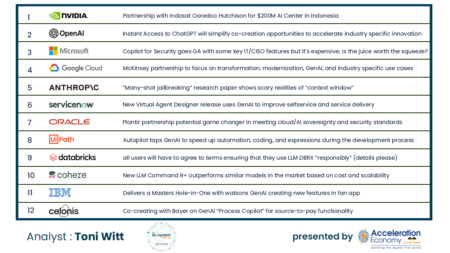Written by: Dena McCorry, Director Healthcare Industry
Before we get into what we think will be the biggest healthcare and healthcare technology trends in 2022, let’s take a look further down the timeline and projections from Gartner who predict that by the year 2025:
- More than 10% of all hospital beds will be “shifted to the home” via digitally enabled services and treatments.
- Approximately 20% of patients, providers, and payers (insurers) will be connected via a digital marketplace.
- At least 10 major employers will “cut out the middle man” and no longer work with payer provider networks, opting instead to provide major elements of healthcare directly.
- A majority of the top 20 life science companies will suffer cybersecurity issues resulting in $10b of losses.
Within one year, Gartner predicts that a lack of virtual healthcare services will contribute to 5% of disease-related deaths, worldwide.
But what awaits us in the immediate future? What kinds of trends, technologies, and methodologies can we expect in healthcare in 2022?
Thought leaders from Deloitte to Forbes and McKinsey have published their predictions, and while they’re not 100% aligned on all coming trends there is a connecting, overarching theme that we’ve seen in their research and in our work in healthcare: patient empowerment through technology.
We see that theme supported by three specific trends, which we’ll highlight here and explore in depth in future articles.
- Consumerization of Healthcare
- Virtual Healthcare
- Advanced Analytics
Trend 1: Consumerization
Call it the “Amazonification” of healthcare, but what we’re looking at in 2022 are more ways for patients to “shop” for their care. It’s moving away from relying solely on what an employer may offer (as Gartner predicts), and toward open platforms, on-demand services, and tools that put the patient firmly in command.
In some cases, consumerization operates more like commodification, but not in healthcare in 2022. Because most healthcare providers’ point of differentiation is not cost of service, per se, but quality of service. We see providers competing for patients not by a race to the bottom in pricing, but by a race to the top in presenting an unparalleled array of high-quality service offerings.
Where does technology play a part? Primarily in allowing patients access to as much “self-service” as they require. Using solutions such as service portals and omnichannel communications platforms, patients can interact with providers when and how they see fit. Providers will benefit from spending far less time “managing accounts” and far more providing care. An absolute win-win scenario.
Trend 2: Virtual Care
For decades, the above cited experts—McKinsey, et al.—have called out telemedicine as the next big thing in healthcare. They were absolutely right, and now have also been absolutely lapped, as telemedicine will soon be eclipsed by virtual care, a more robust experience for patients and providers alike. Virtual care runs the gamut from video conferencing (via Teams, Skype, or other tools) to full-on, immersive VR (virtual reality) experiences.
To share but one example, Microsoft has developed an Azure-based Health Bot that can interact with patients to gather symptoms, create and deliver care recommendations, and, if needed, connect the patient to a provider. The bot can also have access to provider schedules and areas of expertise and can instantly connect a patient in need to a provider with bandwidth.
Trend 3: Analytics, and More Analytics
In the business world, analytics drive decisions. Having the ability to concurrently collect, codify, analyze, and disseminate data from every internal system and relevant third-party source is a lynchpin of success.
In healthcare, data comes in two specific “flavors”: operational data (the basic business data outlined above), and clinical data (basically unique to healthcare, biotech, pharma, and life science).
Utilizing every available piece of operational data will be critical in supporting the other two trends mentioned here: consumerization and virtual care. It’s this operational data that helps collect the insights required to deliver quality virtual care, and to properly manage patient throughput. Operational analytics will be central to both patient empowerment and efficiency of care.
Clinical analytics, however, is more directly tied to the quality of care. When a healthcare organization is able to tap into clinical analytics, it can deliver more personalized care to every patient. It’s clinical analytics that will also best help drive forward new therapeutics, treatments, and pharmaceuticals. We’re seeing these analytics used daily by leading life science companies, and expect that in 2022, they will permeate other tiers of the industry as well.
The “Forever” Trend in Healthcare
While we see the trends change from year to year, there is one that we hope will be everlasting. The continued push toward patient-centered care, toward putting the patient in the center of their own care, giving them the tools and the know-how to make informed decisions on managing their health.
We believe the 2022 healthcare and healthcare technology trends outlined above are all part of supporting more complete and effective patient-centered care, and in delivering higher quality care as well.
Stay tuned as we publish more findings and insights on the future of healthcare and the technology that helps fuel it.
Check out our healthcare website and contact us to see how we can help you.






